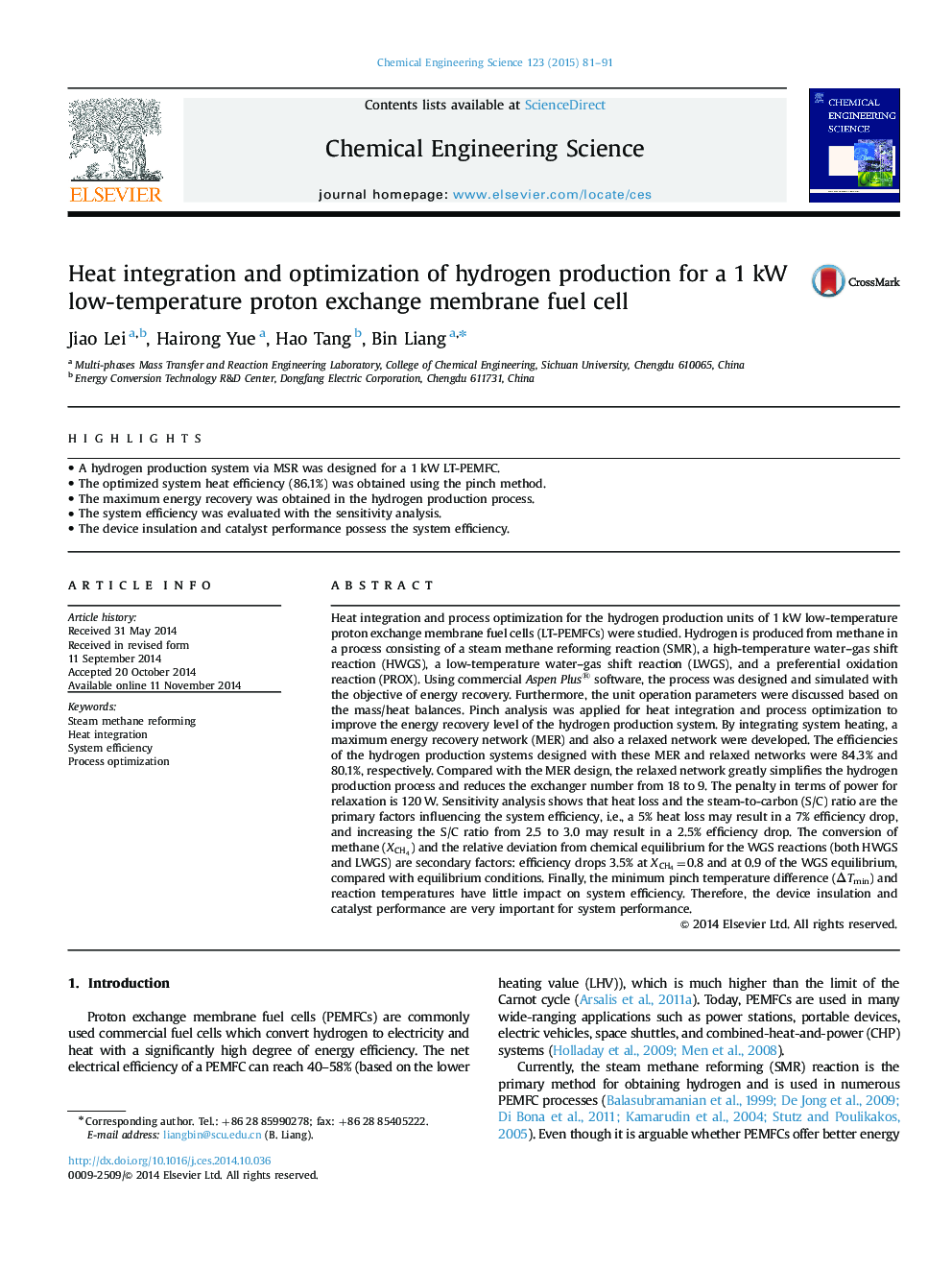| کد مقاله | کد نشریه | سال انتشار | مقاله انگلیسی | نسخه تمام متن |
|---|---|---|---|---|
| 6590482 | 456858 | 2015 | 11 صفحه PDF | دانلود رایگان |
عنوان انگلیسی مقاله ISI
Heat integration and optimization of hydrogen production for a 1Â kW low-temperature proton exchange membrane fuel cell
دانلود مقاله + سفارش ترجمه
دانلود مقاله ISI انگلیسی
رایگان برای ایرانیان
کلمات کلیدی
موضوعات مرتبط
مهندسی و علوم پایه
مهندسی شیمی
مهندسی شیمی (عمومی)
پیش نمایش صفحه اول مقاله

چکیده انگلیسی
Heat integration and process optimization for the hydrogen production units of 1Â kW low-temperature proton exchange membrane fuel cells (LT-PEMFCs) were studied. Hydrogen is produced from methane in a process consisting of a steam methane reforming reaction (SMR), a high-temperature water-gas shift reaction (HWGS), a low-temperature water-gas shift reaction (LWGS), and a preferential oxidation reaction (PROX). Using commercial Aspen Plus® software, the process was designed and simulated with the objective of energy recovery. Furthermore, the unit operation parameters were discussed based on the mass/heat balances. Pinch analysis was applied for heat integration and process optimization to improve the energy recovery level of the hydrogen production system. By integrating system heating, a maximum energy recovery network (MER) and also a relaxed network were developed. The efficiencies of the hydrogen production systems designed with these MER and relaxed networks were 84.3% and 80.1%, respectively. Compared with the MER design, the relaxed network greatly simplifies the hydrogen production process and reduces the exchanger number from 18 to 9. The penalty in terms of power for relaxation is 120Â W. Sensitivity analysis shows that heat loss and the steam-to-carbon (S/C) ratio are the primary factors influencing the system efficiency, i.e., a 5% heat loss may result in a 7% efficiency drop, and increasing the S/C ratio from 2.5 to 3.0 may result in a 2.5% efficiency drop. The conversion of methane (XCH4) and the relative deviation from chemical equilibrium for the WGS reactions (both HWGS and LWGS) are secondary factors: efficiency drops 3.5% at XCH4=0.8 and at 0.9 of the WGS equilibrium, compared with equilibrium conditions. Finally, the minimum pinch temperature difference (ÎTmin) and reaction temperatures have little impact on system efficiency. Therefore, the device insulation and catalyst performance are very important for system performance.
ناشر
Database: Elsevier - ScienceDirect (ساینس دایرکت)
Journal: Chemical Engineering Science - Volume 123, 17 February 2015, Pages 81-91
Journal: Chemical Engineering Science - Volume 123, 17 February 2015, Pages 81-91
نویسندگان
Jiao Lei, Hairong Yue, Hao Tang, Bin Liang,